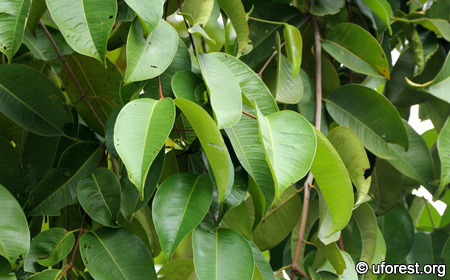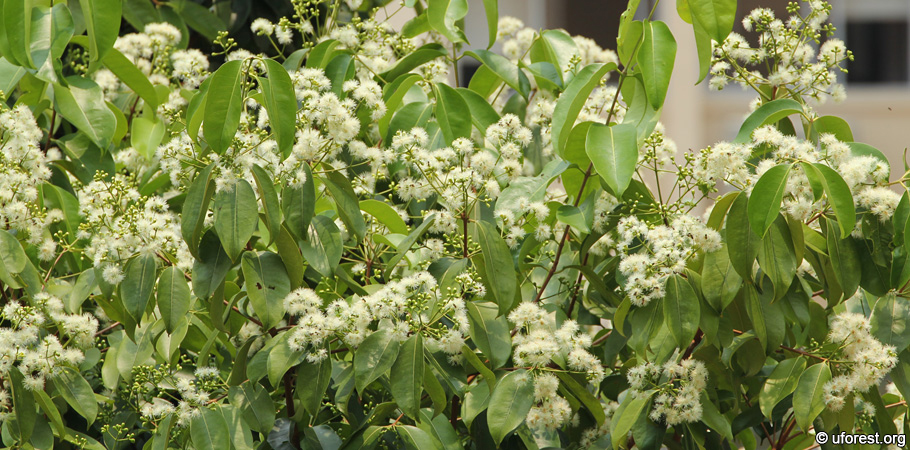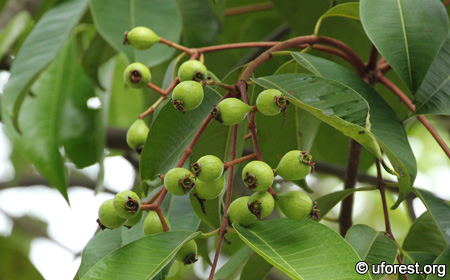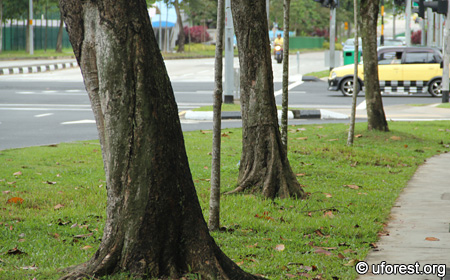Syzygium grande (Wight) Walp.
| Etymology | Genus | Jointed (Syzygos), referring to its paired leaves |
|---|---|---|
| Species | Large, referring to its leaf size | |
| Family | Myrtaceae | |
| Synonyms | Eugenia grandis Wight | |
| Common Names | Sea Apple, Jambu Laut | |
| Status | Native: Common | |
| Form | Tree | |
| Native Distribution | Indochina, Peinsular Malaysia, and Borneo | |
Diagnostics:
Syzygium grande have an irregular dome-shaped crown. The large leaves of about 20 cm long are somewhat droopy and oppositely arranged. They also typically folded upwards at the mid vein and have a looping vein that runs along the leaf margin.
Interesting Facts:
The Sea Apple is a coastal forest tree which can also be commonly found in young inland secondary forests in Singapore. It was first cultivated extensively as a wayside tree in the 1882 (Rao & Wee, 1989). They act as a fire screens (since they are resistance to burning) from the once lalang-rich grasslands that caught fire easily. At 2009, it is the 4th most abundant roadside tree in Singapore; numbering up to 18,106 individuals (Tan et al., 2009).The flowers are visited by bees in the day, and bats at night; evident from a tree whereby its crown was facing my kitchen window before it was chopped down. The fruits are said to be bat-dispersed too (Rao & Wee, 1989).

Form of a cultivated Sea Apple.

Leaves are droopy and folded upwards at mid-vein.

The leaf is large and veins have marginal loops.

Puffy and showy white flowers fill up the entire crown when in bloom.

The fruits are green and globluar.

It is common to see trunks having a twisted form.
References
Rao AN & WC Wee (1989) Singapore Trees. Singapore Institute of Biology, Singapore. 357 pp.Tan PY, B Yeo, WX Yip & HS Lua. (2009) Carbon Storage and Sequestration by Urban Trees in Singapore. Centre for Urban Greenery and Ecology, National Parks Board, Singapore. 14 pp.
Author: Siyang
Posted: 2013-02-11 / Modified: 2017-12-25
Google Ads